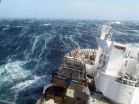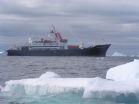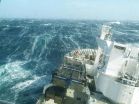(Press-News.org) Many of the drugs we take today to treat pain, fight cancer or thwart disease were originally identified in plants, some of which are endangered or hard to grow. In many cases, those plants are still the primary source of the drug.
Now Elizabeth Sattely, an assistant professor of chemical engineering at Stanford, and her graduate student Warren Lau have isolated the machinery for making a widely used cancer-fighting drug from an endangered plant. They then put that machinery into a common, easily grown laboratory plant, which was able to produce the chemical. The technique could potentially be applied to other plants and drugs, creating a less expensive and more stable source for those drugs.
"People have been grinding up plants to find new chemicals and testing their activity for a really long time," Sattely said. "What was striking to us is that with a lot of the plant natural products currently used as drugs, we have to grow the plant, then isolate the compound, and that's what goes into humans."
In her work, published Sept. 10 in the journal Science, Sattely and her team used a novel technique to identify proteins that work together in a molecular assembly line to produce the cancer drug. Her group then showed that the proteins could produce the compound outside the plant - in this case, they had put the machinery in a different plant, but they hope to eventually produce the drug in yeast. Either the plant or yeast would provide a controlled laboratory environment for producing the drug.
This work could lead to new ways of modifying the natural pathways to produce derivative drugs that are safer or more effective than the natural source.
"A big promise of synthetic biology is to be able to engineer pathways that occur in nature, but if we don't know what the proteins are, then we can't even start on that endeavor," said Sattely, who is also a member of the interdisciplinary institutes Stanford Bio-X and Stanford ChEM-H.
Finding the machinery
The drug Sattely chose to focus on is produced by a leafy Himalayan plant called the mayapple. Within the plant, a series of proteins work in a step-by-step fashion to churn out a chemical defense against predators. That chemical defense, after a few modifications in the lab, becomes a widely used cancer drug called etoposide.
The starting material for this chemical defense is a harmless molecule commonly present in the leaf. When the plant senses an attack, it begins producing proteins that make up the assembly line. One by one, those proteins add a little chemical something here, subtract something there, and after a final molecular nip and tuck, the harmless starting material is transformed into a chemical defense.
The challenge was figuring out which of the many proteins found in the mayapple leaf were the ones involved in this pathway. Sattely started with the realization that the proteins she needed to find weren't always present in the leaf. "It's only when the leaf is wounded that the molecule is made," she said.
And if the molecule is only made after wounding, the proteins that make that molecule are probably also only around after a wound as well.
The question then became, "What are all the molecules that are there after wounding?" Sattely said.
It turns out that after damaging the plant leaf, 31 new proteins appeared. Sattely and her team put various combinations of those proteins together until they eventually found 10 that made up the full assembly line. They put genes that make those 10 proteins into a common laboratory plant, and that plant began producing the chemical they were seeking.
Drugs from yeast
The eventual goal is not simply moving molecular machinery from plant to plant. Now that she's proven the molecular machinery works outside the plant, Sattely wants to put the proteins in yeast, which can be grown in large vats in the lab to better provide a stable source of drugs.
Producing a drug in yeast also provides some flexibility that isn't present when isolating a drug from plants.
"We can only use what the plant gives us," Sattely said.
In yeast, scientists can modify the genes to produce proteins with slightly different functions. For example, they could nip a little more off the chemical or add a slightly bigger side chain, or subtly alter the function of the eventual drug.
It may also be possible to feed the yeast a slightly different starting product, thereby changing the chemical that the molecular assembly line churns out. These approaches would provide a way of tweaking existing drugs in an effort to improve them.
Sattely said the work is a good example of how chemistry can be applied to problems of human health, which is the goal of Stanford ChEM-H. She thinks the technique she developed to find the pathway in mayapple could be applied to a wide range of other plants and drugs.
"My interests are really identifying new molecules and pathways from plants that are important for human health," she said.
INFORMATION:
The Southern Ocean has begun to absorb more atmospheric carbon dioxide (CO2) according to new research from an international team, including the University of East Anglia.
A decade ago scientists announced that the amount of CO2 being absorbed by the Southern Ocean had not increased since the late 1980s. And it was feared that this 'carbon sink' might have begun to saturate.
But new research to be published tomorrow (Friday) in the journal Science reveals that rather than stalling, the amount of CO2 being absorbed is on the rise again.
It is thought that changes ...
This news release is available in Japanese.
Inconveniently, the only current method to synthesize the chemotherapy agent etoposide is by using extracts from a plant, but researchers have successfully manipulated Nicotiana benthamiana (tobacco) to create a more immediate and potent precursor. Etoposide is a topoisomerase inhibitor used to treat a variety of malignancies, including lung cancer and leukemia. There is currently no way to produce etoposide without one of its precursors, podophyllotoxin, which is found in the slow-growing Himalayan Mayapple plant. Four ...
This news release is available in Japanese.
In this Policy Forum, Jonas Meckling et al. discuss the need to close the gap between climate science and policy, arguing that targeted policies and economic incentives are the answer, rather than broad carbon taxes. As policymakers convene at the United Nations Climate Change Conference in December, pinpointing the best policies is critical for a more sustainable future. In theory carbon pricing poses as an efficient solution, but this has yet to be seen in practice. As the authors point out, carbon regulation imposes costs ...
This news release is available in Japanese.
Patients with metastatic melanoma who have benefited from a new type of cancer immunotherapy don't appear to share the same tumor-produced antigens, according to a new report by Eliezer Van Allen and colleagues. If the molecular targets for the immunotherapy differ from patient to patient, as this study suggests, it may be difficult to predict which patients will respond to the treatment. The drug, called ipilimumab, is part of a relatively new class of cancer treatments called immune checkpoint inhibitors. The inhibitors ...
This news release is available in Japanese.
The Southern Ocean has increased its uptake of atmospheric carbon dioxide again, after showing signs of slowing uptake in the 1990s, according to a new report from Peter Landschützer and colleagues. The Southern Ocean is a huge player in carbon sequestration, accounting for up to 40% of oceanic uptake of atmospheric carbon dioxide. When earlier studies showed the Southern Ocean's carbon sink weakening, the findings raised concerns that the planet might lose a powerful way to remove the growing amounts ...
Breathe in, breathe out, in, out... Like a giant lung, the Southern Ocean seasonally absorbs vast amounts of carbon dioxide (CO2) from the atmosphere and releases it back later in the year. But on an annual average the seas surrounding Antarctica absorb significantly more CO2 than they release. Most importantly, these seas remove a large part of the CO2 that human activities emit into the atmosphere, thereby slowing down the growth of this greenhouse gas in the atmosphere, lessening the rate of climate change. Although the Southern Ocean represents no more than a quarter ...
Berkeley -- To speed up progress in tackling climate change, policymakers need to build political support by investing in clean-energy industries rather than first penalizing polluters, according to a new policy paper by researchers at the University of California, Berkeley.
In the paper, to be published Thursday, Sept. 10, in the journal Science, a multidisciplinary team of environmental, political and legal experts finds that instead of emphasizing cap-and-trade schemes and penalties on greenhouse gas emissions - strategies considered to be most efficient by many economists ...
MENLO PARK, Calif. -- Some of the inner workings of Earth's subduction zones and their "megathrust" faults are revealed in a paper published today in the journal Science. U.S. Geological Survey scientist Jeanne Hardebeck calculated the frictional strength of subduction zone faults worldwide, and the stresses they are under. Stresses in subduction zones are found to be low, although the smaller amount of stress can still lead to a great earthquake.
Subduction zone megathrust faults produce most of the world's largest earthquakes. The stresses are the forces acting on ...
Researchers from the MRC Centre for Developmental Neurobiology (MRC CDN) at the Institute of Psychiatry, Psychology & Neuroscience (IoPPN), King's College London, have discovered a new molecular 'switch' that controls the properties of neurons in response to changes in the activity of their neural network. The findings, published in Science, suggest that the 'hardware' in our brain is tuneable and could have implications that go far beyond basic neuroscience - from informing education policy to developing new therapies for neurological disorders such as epilepsy.
Computers ...
WASHINGTON, D.C. - Since 2002, the Southern Ocean has been removing more of the greenhouse gas carbon dioxide from the atmosphere, according to two new studies.
These studies make use of millions of ship-based observations and a variety of data analysis techniques to conclude that that the Southern Ocean has increasingly taken up more carbon dioxide during the last 13 years. That follows a decade from the early 1990s to 2000s, where evidence suggested the Southern Ocean carbon dioxide sink was weakening. The new studies appear today in the American Geophysical Union ...


